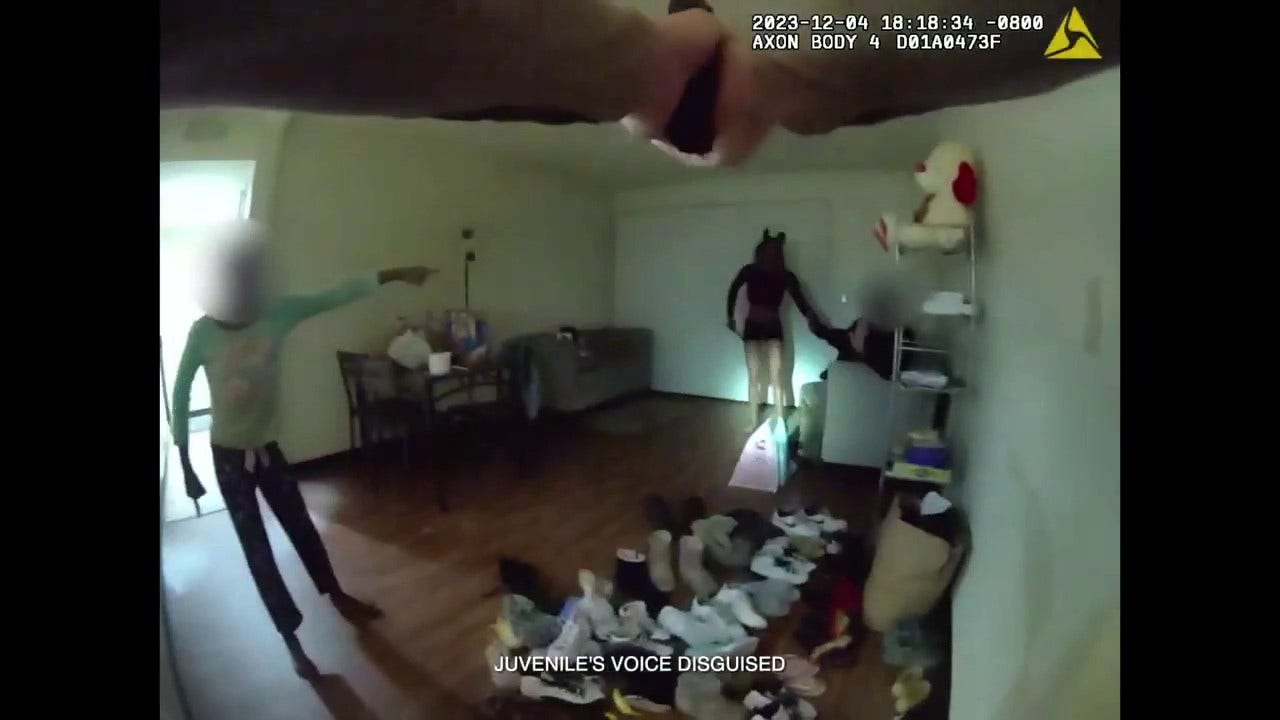So is the footage available?
Officer Nicholas M. Buckley described the arrest in exceptional detail, the single-spaced lines covering two full pages in his report.
[clip]
Buckley homed in on the guy in the long brown coat, Brandon Simpson. While the other men nonchalantly headed north up Taylor Street, Simpson went in the opposite direction and “quickly walked away from the group upon detecting police presence,” Buckley wrote.
He noted what he considered Simpson’s suspicious body language: hands near his waistband beneath his coat. It was “consistent with a person trying to conceal a weapon,” he would later say in court.
Buckley ordered Simpson to stop and show his hands, and when he did not, Buckley “grabbed him by the shoulders.” Simpson resisted and struggled to escape, the officer said. A battle broke out as more officers joined the effort to subdue Simpson, punching and kicking him until they were able to “gain control” and snap on handcuffs, Buckley said. Afterward, officers picked up a white object that had apparently fallen out of Simpson’s waistband or coat. It was a sock with a gun inside of it. Simpson was booked on charges of illegal firearm possession and faced 10 years in federal prison.
On April 13, 2016, officer Buckley repeated his story in a written court declaration, the same story he’d tell a month later on the witness stand during Simpson’s pretrial hearing.
When Buckley had finished testifying, the defense attorney stepped up. She had footage of the arrest, from a surveillance camera on a building across the street.
In full color and crisp definition, it showed what really happened that night.
The police car pulls up. The huddled men stroll away together. A man in a long brown coat near the back of the group — Simpson — walks with them. His arms are at his sides, clearly visible. He holds a water bottle in one hand. Seemingly picking this man at random, Buckley cuts him off on the sidewalk. The man tries to step around the officer. Buckley places a hand on his chest. The man takes a step back. Buckley grabs his arms, pinning his hands to his back. A second police car pulls up. Three officers rush to Buckley and knock the man to the ground. His body disappears beneath the scrum. With the man pinned against the fence, the officers let loose punches and kicks.
Judge Charles Breyer, a long-faced man with combed-down gray hair who often wears a bow tie beneath his robe, was incensed.
“The video was unequivocal in rebutting everything the police officer testified to — at least to all the pertinent details,” he said, before he dismissed the case.
[clip]
San Francisco officer Buckley lied in his police report, in his court declaration, and in his testimony. He lied about his reason for approaching Simpson, and the video showed that he violated Simpson’s constitutional rights by stopping him without reasonable suspicion and then detaining him without probable cause.
So it didn’t matter whether or not Simpson had a gun. The stop was illegal, Judge Breyer ruled in his dismissal of the case, and so the evidence it produced was legally useless. Prosecutors dropped the charges and informed Buckley’s bosses.
Eight months later, Buckley remains on the force. The department would not say whether he has been disciplined but told BuzzFeed News that “this is still an active and open Internal Affairs investigation.” Federal prosecutors have not charged him with perjury and would not comment on the case.
Lying is “something that has been endemic in the history of the American police system for the last three or four generations,” said Peter Keane, a former San Francisco police commissioner who now teaches law at Golden Gate University. “And why do they do it? The main reason they do it, historically and now, is they can get away with it.”


